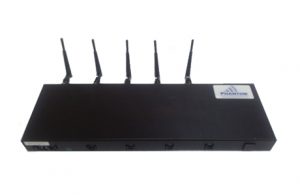Warfare in the 21st century has become so dependent on real-time communication with forces of all sizes, it is no surprise that every military has developed satellite jamming capabilities. Whether for communicating with naval battle groups across the globe or special forces units behind enemy lines, satellite communications are the most reliable means of coordinating, accessing mission-critical intelligence in real-time and sharing information on the actions and movements of the enemy. The ability to interfere with an enemy’s satellite communications link is considered such a high strategic priority, that the first weapon acquired for the newly created US Space Force was a satellite jammer.
The satellites that are tasked with providing continuous coverage of large sections of the globe must be placed in an orbit with a sufficiently high altitude. So while their position can be figured out (by nature they are geo-synchonous satellites so their position relative to the Earth is fixed), physically targeting them directly at such a great height is such a challenge, that is much more efficient to focus on interfering with the signals that they transmit.
Up or Down
There are two main ways for a satellite jammer to interfere with a satellite. The first is to target the uplink, the transmissions coming from the ground to the satellite. This can be done by generating a jamming signal in the same specific frequency and aiming it at the satellite, so the satellite cannot distinguish between the actual communication and the noise. The second option is to disrupt the downlink, the transmissions from the satellite to the ground forces. According to the same principle, the satellite jammer generates noise in the target frequency, however in this case, instead of aiming the signal at the satellite, the jamming unit will emit signals that cover a surface area in which ground forces will be waiting to receive communications. The transmitting power that is required to ‘confuse’ the satellite is quite high, however, once achieved, it effectively jams the satellite for all ground communications. Jamming the downlink requires much less power, but its effect is limited accordingly, both in distance and to receiving terminal antennas that have a line of sight to the jammer. Size and transmission power will determine the jamming range (downlink satellite jammers can be minimised to the size of a handheld jammer).
Basic jamming capability is fairly straightforward and does not require sophistication (so much so that militaries regularly jam their own satellite communications by accident). However, advanced satellite jammers are capable of disrupting specific frequencies and bands (for example, based on which satellites they are meant to interfere with), and allow the operator to pre-select the frequencies or operate the jammer in dynamic mode to interfere with a much wider range of communications.







